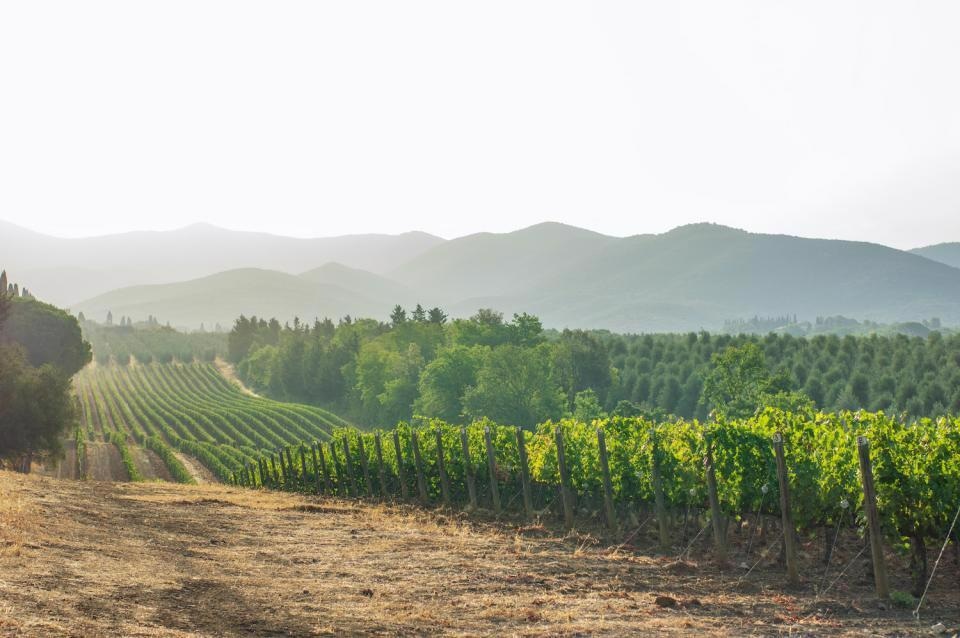Dec 18 2020
Several grape-cultivating regions across the globe are expected to become too hot and dry to produce high-quality wine from conventional varieties due to the effect of climate change.
 Wine grapes from regions that are more prone to stress have traits that could help them cope with climate change. Image Credit: Getty.
Wine grapes from regions that are more prone to stress have traits that could help them cope with climate change. Image Credit: Getty.
At the University of California, Davis (UC Davis), researchers have discovered wine grape varieties from regions more susceptible to stress exhibit traits that could enable them to deal with climate change.
Published in the Journal of Experimental Botany, the study reports that varieties that produce their best wines in drier and warmer regions exhibit water-conserving traits that enable the vines to extend their water resources to be available throughout the growing season.
The relationships between grape varieties and regions have historically been based on wine, without considering traits that affect drought or heat tolerance. These findings show these varieties could be more resilient to climate change than expected.
Megan Bartlett, Study Lead Author and Assistant Professor, Department of Viticulture and Enology, University of California, Davis
The Trade-Off
As part of the study, the researchers investigated how grapevines control their stomata—small pores found on the leaf surface that enable plants to ingest carbon dioxide for photosynthesis and eject oxygen.
The control of such stomata impacts the amount of CO2 available for photosynthesis and the amount of water that evaporates from the leaves. Grapevines should opt between opening their stomata to ingest CO2 to produce sugars for growth and ripening or closing the stomata to decrease evaporation and water stress.
Minimal water stress leads to enhanced wine due to the concentration of aromas and flavors in the grapes. However, a higher water stress will curb the grapes from obtaining their optimal balance of sugars, tannins and acids, thereby creating flat and dull wines.
The team analyzed traits for 34 varieties and employed a global database of planting areas in various wine regions to determine the link between varieties and regions. The focus of the study was on European regions, where irrigation is limited or banned, to capture directly the stress brought about by the local climate.
The researchers discovered that the varieties cultivated in regions that could more probably experience water stress, like Italy’s Montepulciano and Sangiovese, maintained their stomata more closed compared to varieties like Sauvignon Blanc from cooler and more humid regions.
This strategy would help these varieties save water.
Gabriela Sinclair, Study Co-Author and Research Technician, University of California, Davis
Bartlett warns that such traits may have undesirable impacts, as heatwaves turn more severe. Grapevines cool the leaves through evaporation, the same way people cool themselves by sweating. Too much limiting of evaporation could make leaves attain damaging temperatures, thereby decreasing their future photosynthesis and restricting the sugars available for ripening.
We have more work to do to understand how these traits will affect grapevines as the climate reaches new extremes. These findings show that traits will be important to consider when we predict what will happen to different wine regions.
Megan Bartlett, Study Lead Author and Assistant Professor, Department of Viticulture and Enology, University of California, Davis
The study was supported by the UC Davis College of Agricultural Environmental Sciences and Department of Viticulture and Enology and by donations to the department from the Rossi family.
Journal Reference:
Bartlett, M K & Sinclair, G (2020) Temperature and evaporative demand drive variation in stomatal and hydraulic traits across grape cultivars. Journal of Experimental Botany. doi.org/10.1093/jxb/eraa577.